Do you know all the statues in Sint Maarten?
While you drive around the island of Sint Maarten you will find several monuments and statues. Have you ever wondered what they are standing for? Here you will find the answers:
Salt Pickers
The history of Sint Maarten is represented in one of the most beautiful statue groups. Therefore you will find close to the government building, in the middle of the roundabout, directly opposed to the Great Salt Pond in Philipsburg, the statue of the “Salt Pickers”. So salt played an essential role in the island’s culture as it was known as “SOUALIGA”, the land of the salt.
The monument comprises five statues: a man shoveling salt from the ground is the most prominent figure. Next to him are two women collecting the salt and another woman carrying a child on her back and a man carrying a big tray with salt.
For example, when the Dutch settled in the South of the island of Sint Maarten, they discovered salt in the Great Pond and shipped up to 400 cargo ships across the Atlantic. The “Salt Pickers” were enslaved men, women, and even children who were forced to do physically demanding work harvesting the salt.
Caribbean-wide well-known artist Michael Maghiro sculpted this beautiful composition and many other bronze statues. Moreover, most of the Sint Maarten Statues are made by him.
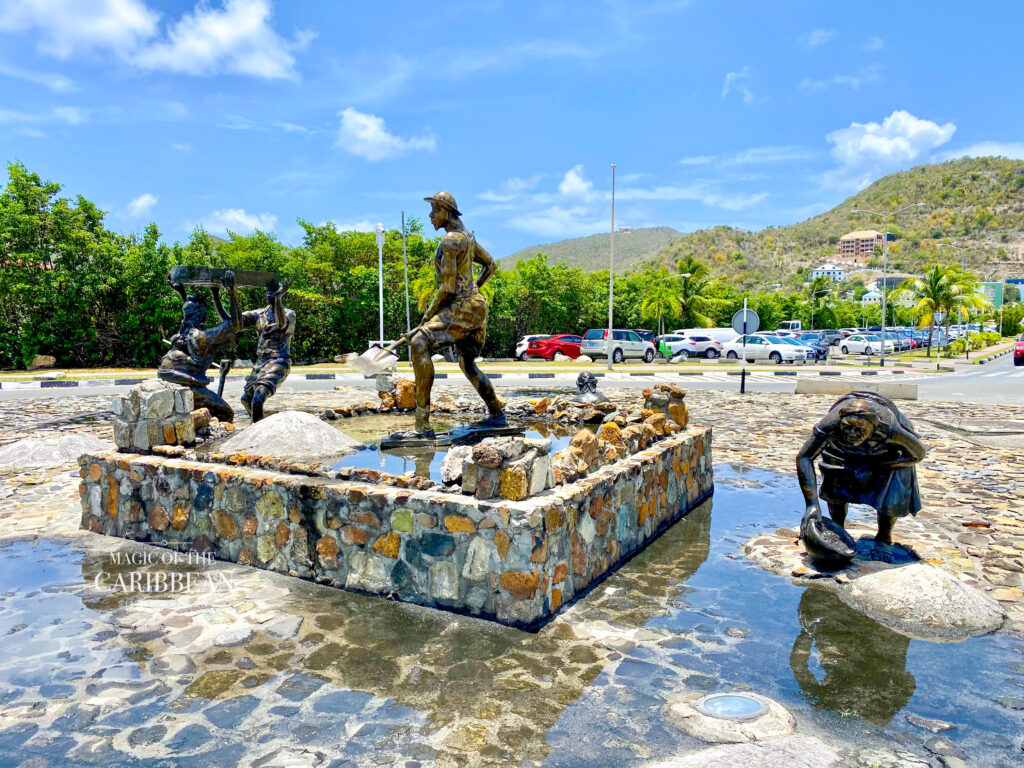

Mr. Bell
At the viewpoint on Cole Bay Hill, next to the flag mast, you can find the statue of Mr. William Henry Bell II, better known as Willy the 7th. He was named like this since he was the sevens child of the family. In 1949, he and his brothers bought the land of Cape Bay Estate. However, he died only one year afterward at the young age of 33. So today, the statue is a reminder of him. Therefore it was put up to honor him as his descendants allowed the government of Sint Maarten to put up the big flag mast on the estate.
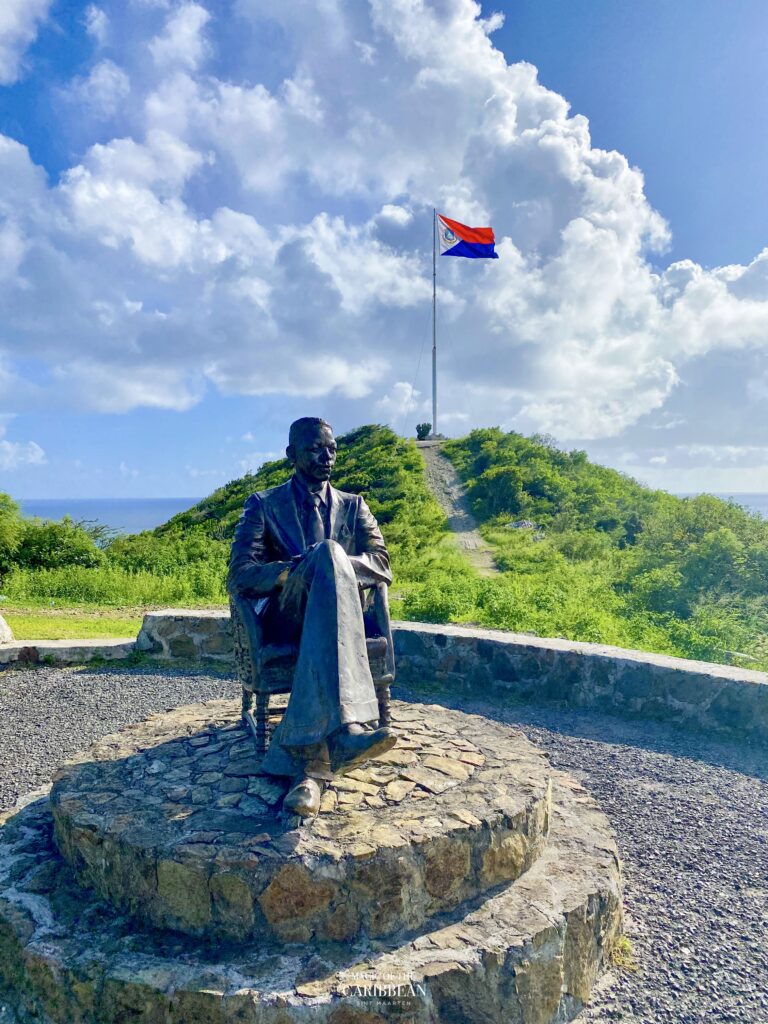
Take a closer look at the middle of the roundabout in Dutch Quarter, Sint Maarten. This 3 figures monument can be found there:
Tata, The Bus Driver
Jean Frederique Brooks, better known as “Tata, The Bus Driver”, brought children to school and picked them back up. Above all Tata was known for driving slowly and safely. He did that to be able to chat with the kids, lecture them, and educate them about life. Everyone who knew him speaks highly of Tata and shares the important lessons that they learned from him. So this statue honors him and reminds us of him every time we pass by.
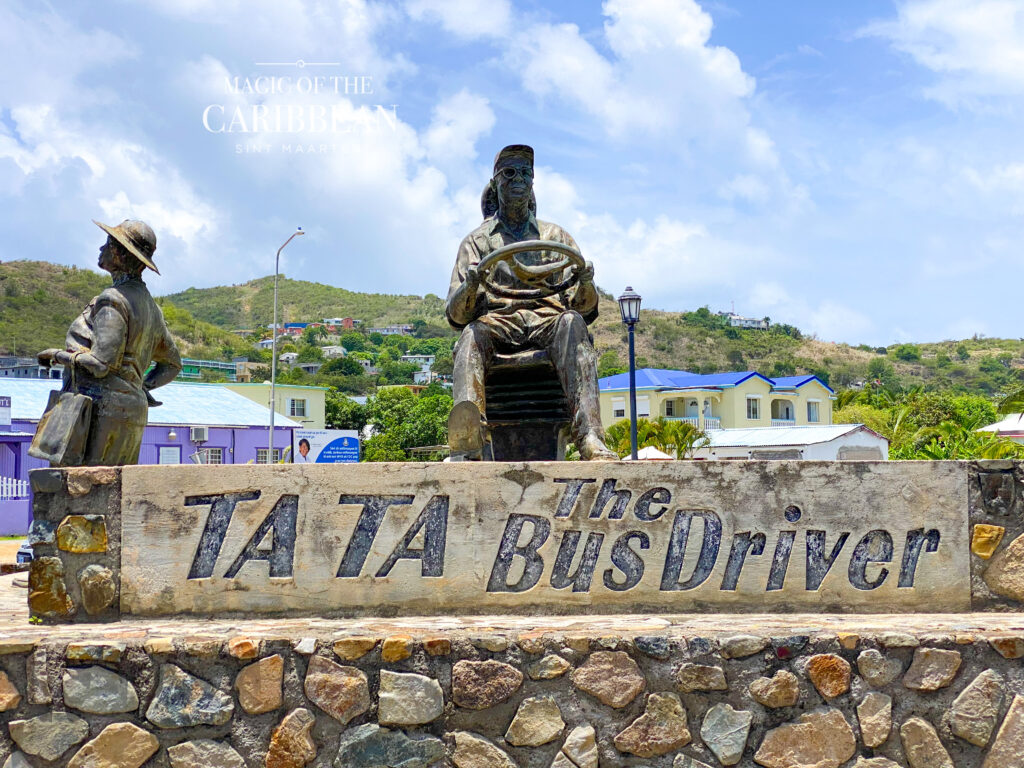
Lalie Duzanson
Florian Eulalie Duzanson “Lalie Duzanson” was known for her incredible baking skills. Firstly she baked fresh bread, cakes, and pies while secondly taking care of students and people in need. Especially in times of disasters such as hurricanes or tornados, she supplied everyone with shelter and food. So to honor her and her commitment this statue of her was built.
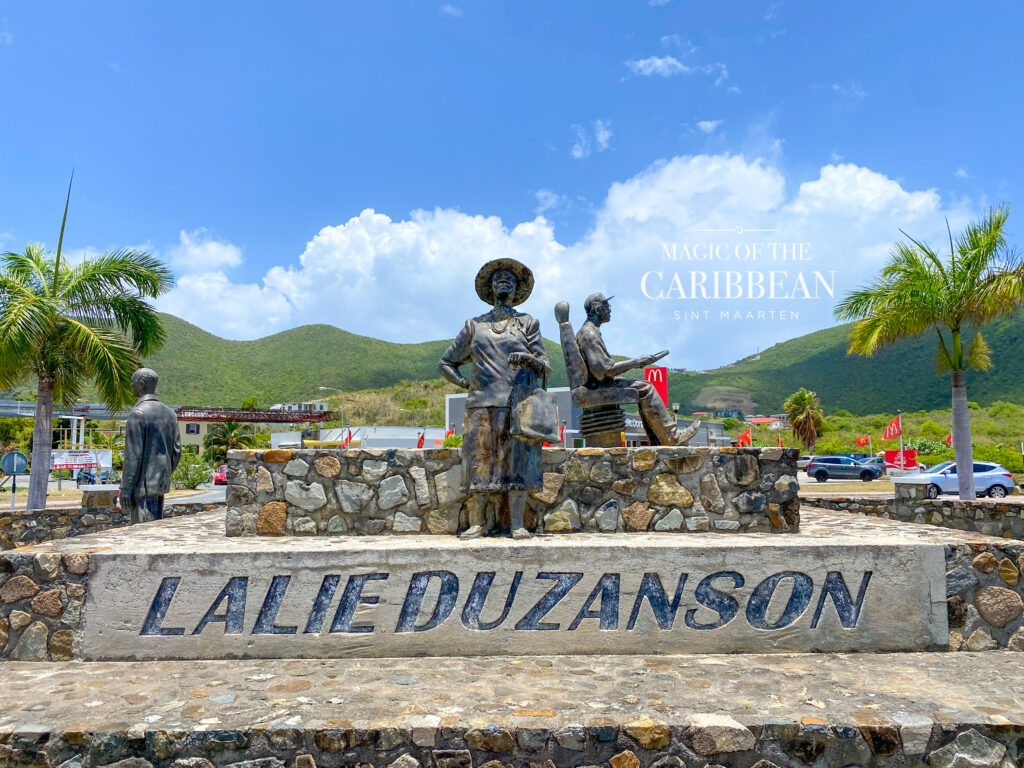
Alec the Butcher
Alexander Lionald Richardson, “Alec the Butcher” was known for his agricultural work and the sale of fresh meat on the island. For instance, it is being told that he is the father of more than 40 children. That is to say, many of them took important roles in St. Maarten – one of them even has a seat in the Dutch parliament today.
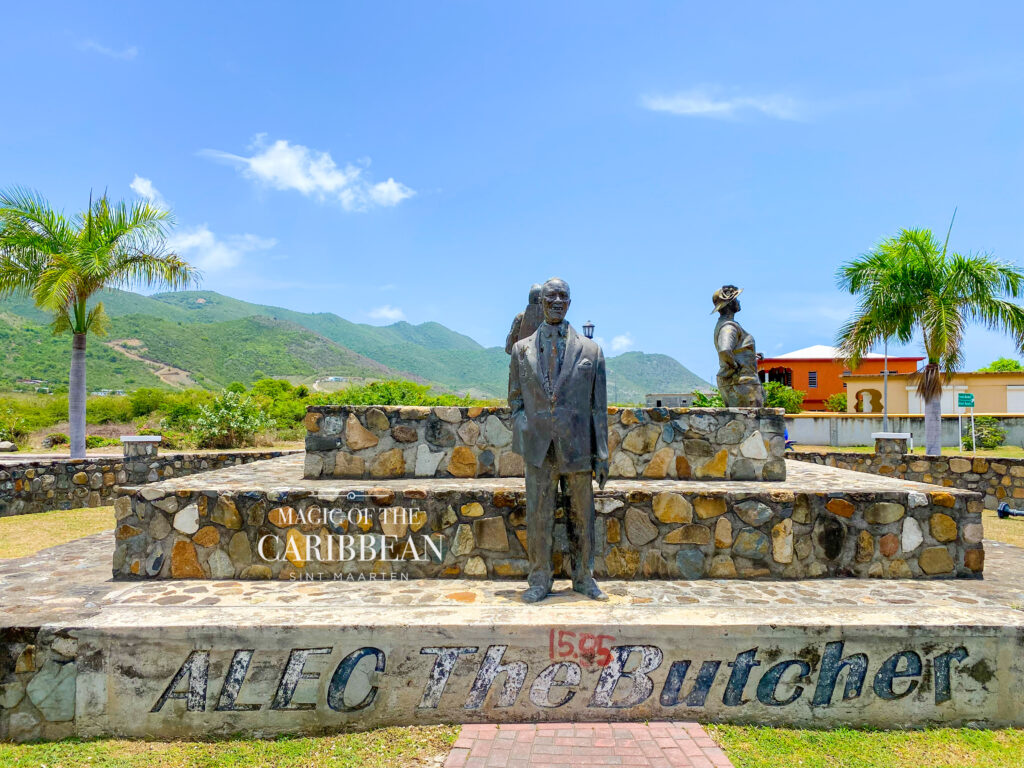
Brown Pelicans
Michael Maghiro recently restored the three statues of the “Brown Pelicans” which are now shimmering in full shine directly at the roundabout in front of the Princess Juliana International Airport (SXM). Hurricane Irma destroyed parts of the statue. An American couple sponsored the reparation. The Brown Pelicans is a bird that not only lives on the island but is its national symbol. Therefore it was so important to have this beautiful artwork restored.

Guarding Loved Ones You May Loose
“Guarding Loved Ones You May Loose” is a statue from the Peridot Foundation. It was set up as a call against domestic violence as well as violence in general. Above all, it was built to remind society that domestic violence or any violence is unacceptable. This monument can be found in the roundabout in Cul-de-Sac, Sint Maarten.
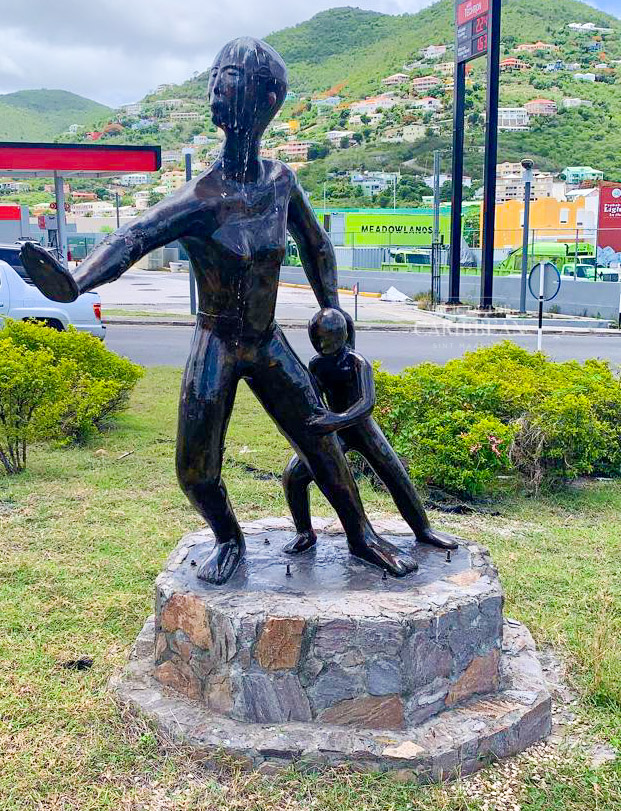
The Freedom Fighter
The statue of “Freedom Fighter” is in the roundabout in the direction of the port in Philipsburg. The emancipation declaration of July 1st, 1863 officially ended the enslavement of black society in St. Maarten. Most importantly it built the foundation for the freedom of every citizen of St. Maarten – no matter their race, skin color, gender, or religion.
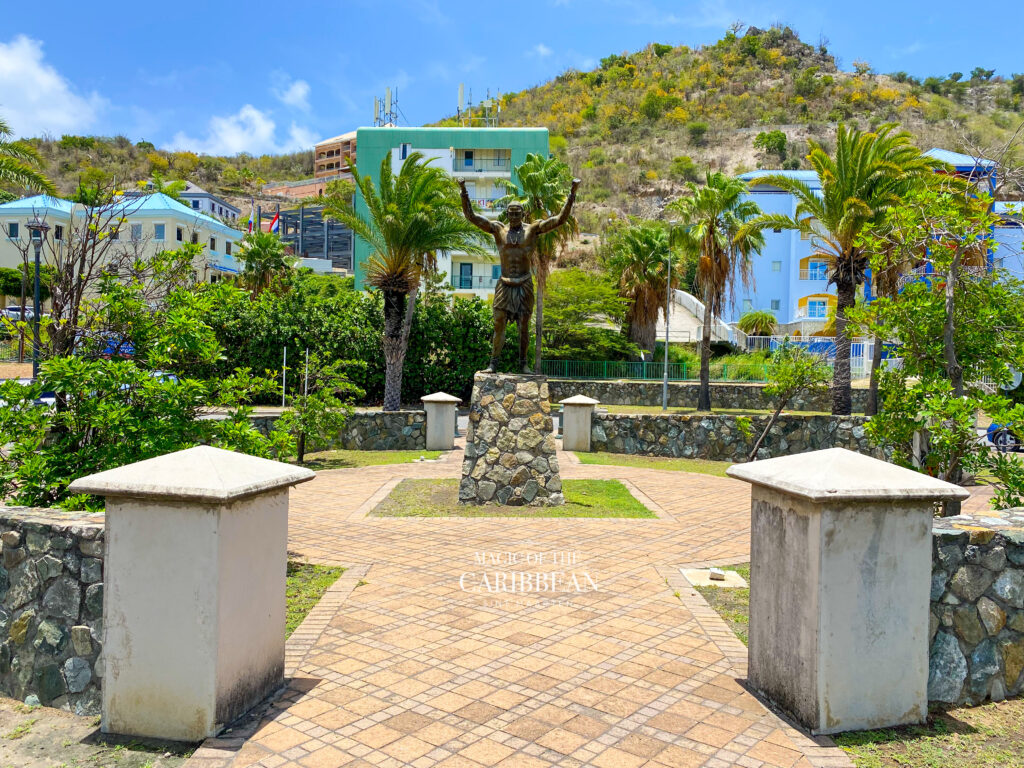
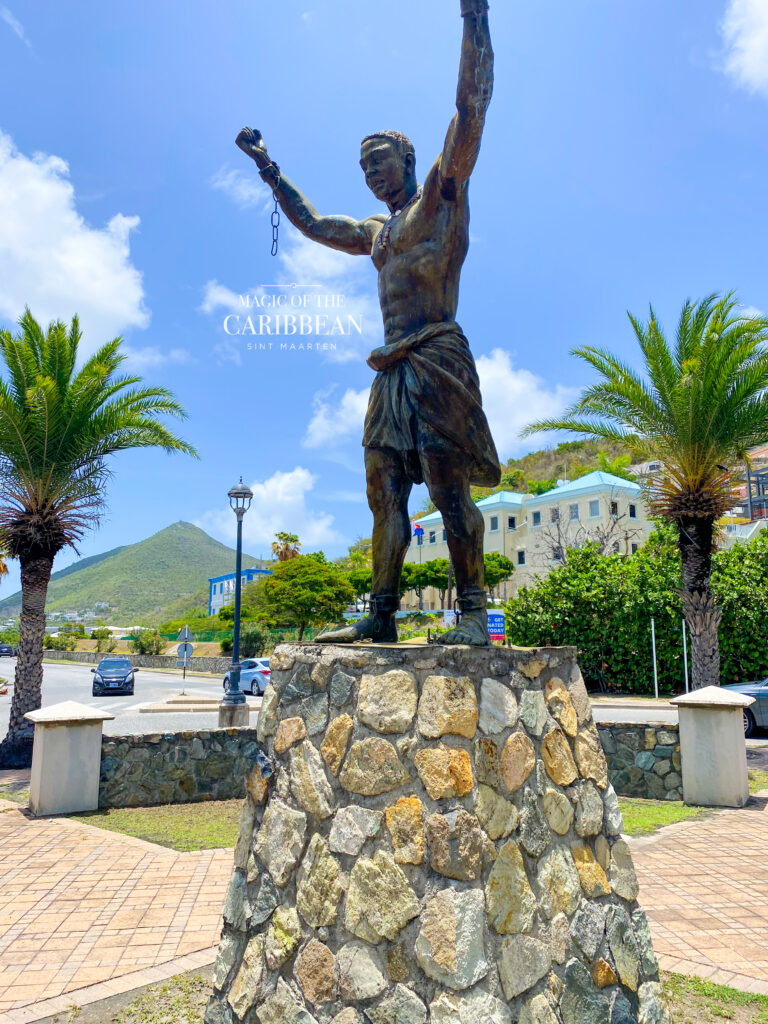
One-Tete Lohkay
Known as the female freedom fighter, “One-Tete Lohkay” is honored for being a hero in times of slavery in Sint Maarten. In the same vein the statue captures Lohkay in movement, almost as if she were running with sugar canes in her left arm and a strap around her breast. Most importantly the statue is a portrayal of her defiance and strength. She fled from the plantation and the plantation owners cut off one of her breasts to punish her and put fear in the other slaves. However, Lohkay was not afraid and ran away again. The statue is placed in the roundabout in Bel Air in front of the hospital.
Read more about her: http://www.thedailyherald.info/index.php?option=com_content&id=29303%3Athe-legend-of-one-tetelohkay
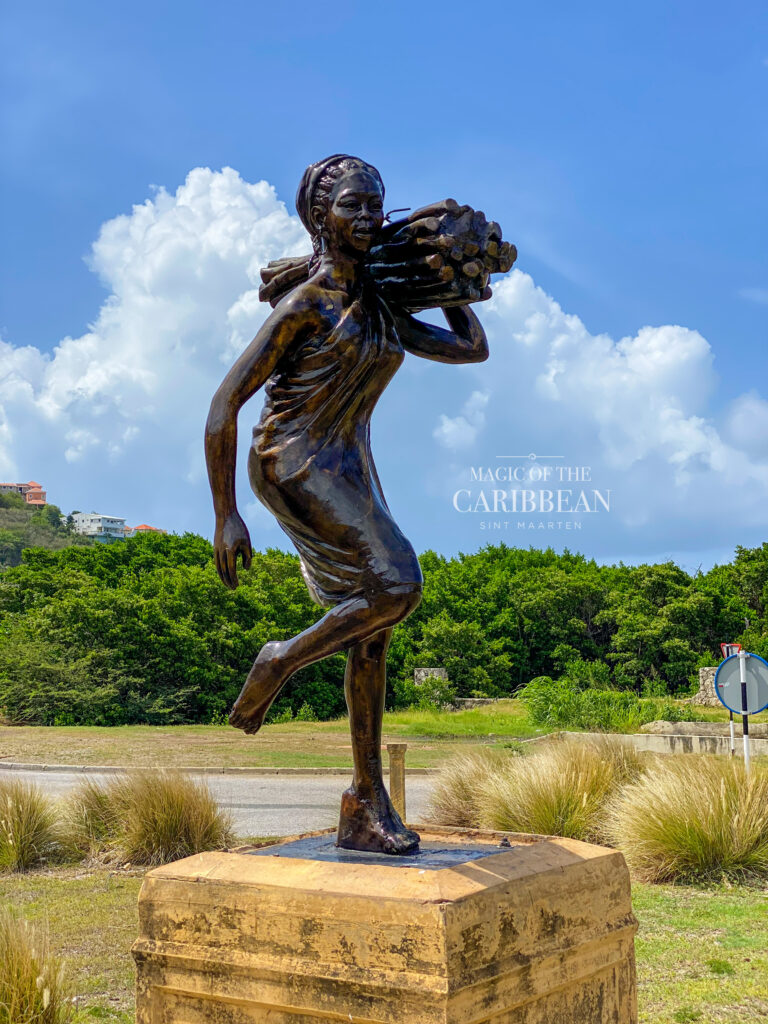
The Traffic Man
The statue to honor Osborne Krythoff aka “The Traffic Man” is located at the roundabout in Cole Bay where he lived in the 60s. He organized traffic on the island voluntarily in Philipsburg in front of the Courthouse as soon as he finished his work on the beach. After a while, he only regulated the traffic. His uniform was a tropical helmet, kaki colored pants and top, a whistle, and a machete. If the driver did not listen to him, he would give him a “Planass” which he must have learned in the Dominican Republic cutting sugar cane. It is the art of hitting someone with the flat end of the machete.
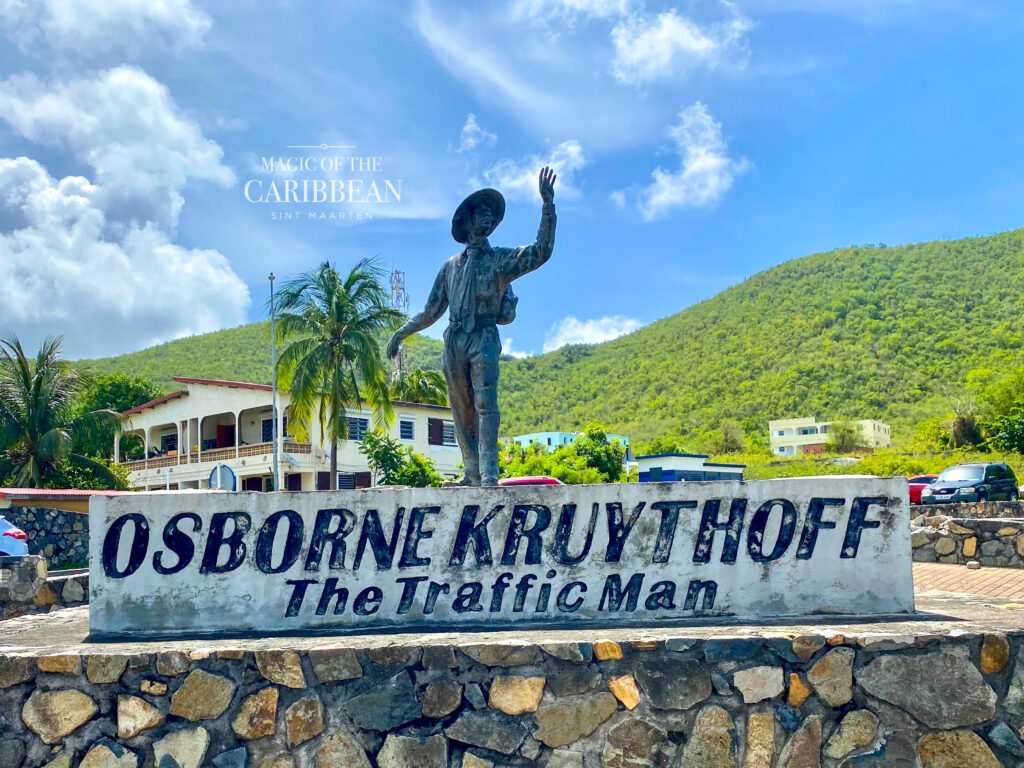
Lady Liberty
“Lady Liberty” is in the roundabout in Agrement in Marigot, Saint Martin, and is a reminder of the abolition of slavery on the French Side of the island in May 1848. The statue was put up by the department of art and culture in Saint Martin under the aegis of Nicole Pipper in 2007. The sculpture was created by carver Theodore Bonev in celebration of the 159th anniversary of the abolition of slavery in Saint Martin. The portrayed woman never existed but she is a symbol of freedom. The statue stands tall and strong with the broken shackles of slavery in one hand, and a lantern in the other.
In addition, it is still today a meeting point when it comes to public gatherings.

The Plane Crash memorial
This memorial was inaugurated very recently, on January 20th, 2023, at Marigot Waterfront by the president of Saint Martin, Louis Mussington. It is a memorial for the 12 people who died in the horrible plane crash on December 24th, 1972. The Twin Otter machine crashed into the sea a few minutes before landing. However there has been a long silence about this terrible event. But now, 50 years later, the silence has been broken. Therefore a commemorative stele has been erected in Marigot, offering the families a place of meditation and remembrance.
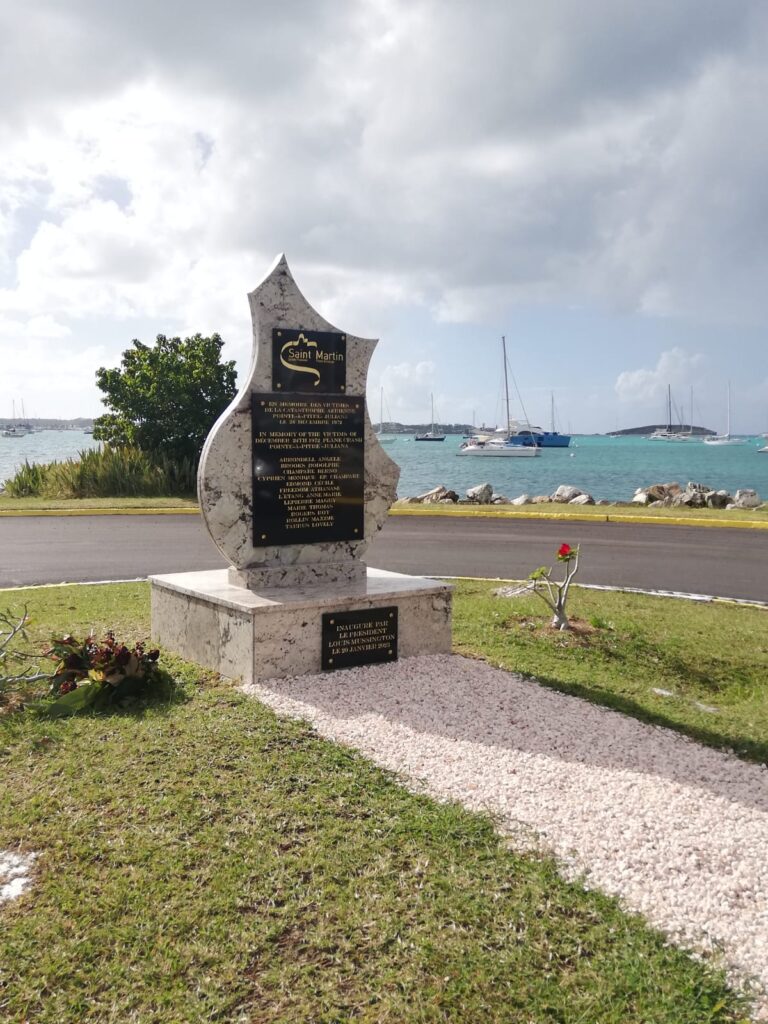
The bust of Walter Plantz Williams
The bust of Walter “Plantz” Williams can be found at Walter-Plantz-Square (WPS) in Philipsburg. Walter was a fishing legend and a long-time resident of Down Street. In addition he cared for the community, supplying them with fresh fish and sharing them in regular get-togethers. He died in 2010. Five years after Hurricane Irma tore the bust of Walter Plantz from its plinth at Walter-Plantz-Square in Philipsburg. A year after it washed up on the shore of Great Bay. As a result of its finding the sculpture of St. Maarten’s fishing legend is back in full regalia at the square that was named in his honor. Consequently, it can be admired by tourists and locals again.

The Fisherman
This statue of a Fisherman is located at Simpson Bay Fish Market to honor all St. Maarten Fishermen. Meanwhile, the Fisherman carries a net across his shoulder and 2 fish he caught at sea.

The GIANT PROTECTOR is located at Port Sint Maarten
The inscription reads:
“His physical size is only matched by the inner strength he personifies. Therefore no name befits im better than „The Giant Protector“This proud African man carries a Globe on his shoulder. Like the small, yet mighty island Sint Maarten, widely known for its friendliness, openness, love and protection, no weight is too much to bear. Effortlessly it cares fo this island and those that visit. It represents the work straight from the heart of Nigerian-born Michael Maghiro Curator of Ikemba, the gallery of contemporary African Arts. It holds everyone´s interest at heart and protects us all.”
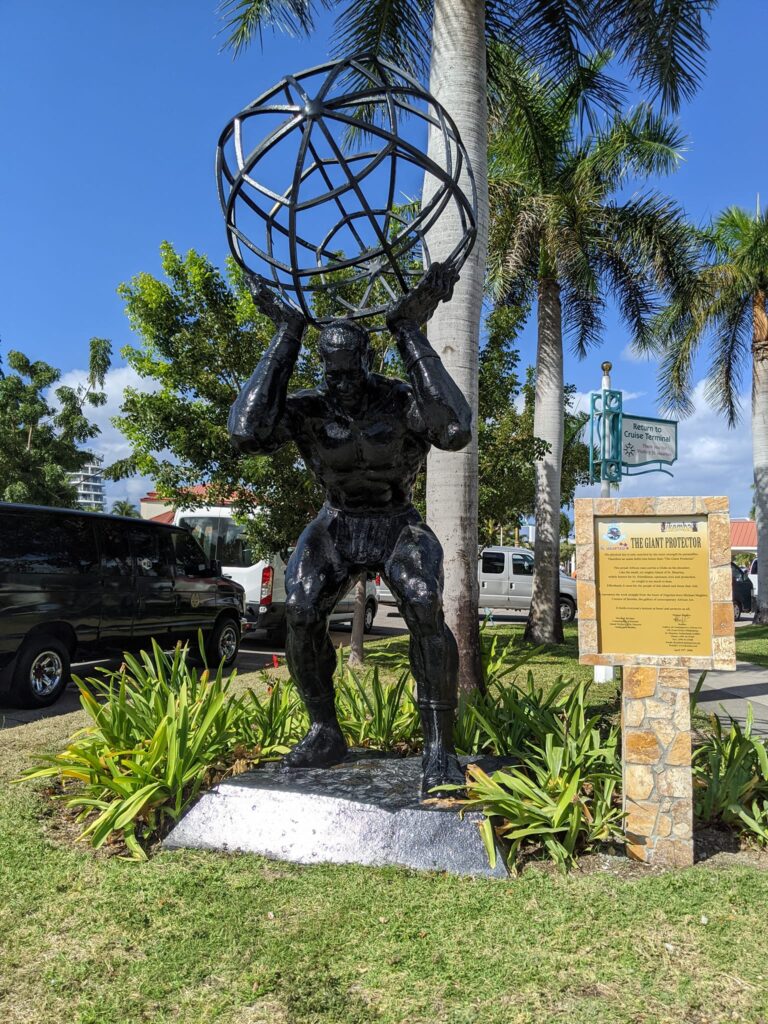
The Claude Wathey statues
Claude Wathey (full name Albert Claudius Wathey; 24 July 1926 – January 1998), was a prominent politician in Sint Maarten. He was knighted by the Dutch Crown for his political longevity. Certainly, he is considered the “Father of modern St. Maarten” and was its leader for decades. Furthermore, Wathey championed political independence for the island in 1989 but was later convicted on charges of perjury.
Most importantly the Wathey family is an old Caribbean family of Belgian origin, from the city of Tongeren. So Claude was elected to the Parliament of the Netherlands Antilles in 1962. During his leadership he represented the three Dutch Windward Islands of Saba, Statia, and Sint Maarten at that time. Above all, his administration is known for transforming Sint Maarten from a neglected colonial backwater into a thriving tourism destination. (source Wikipedia)
This statue is located in Philipsburg in front of the former government building, which got destroyed by Hurricane Irma in 2017.
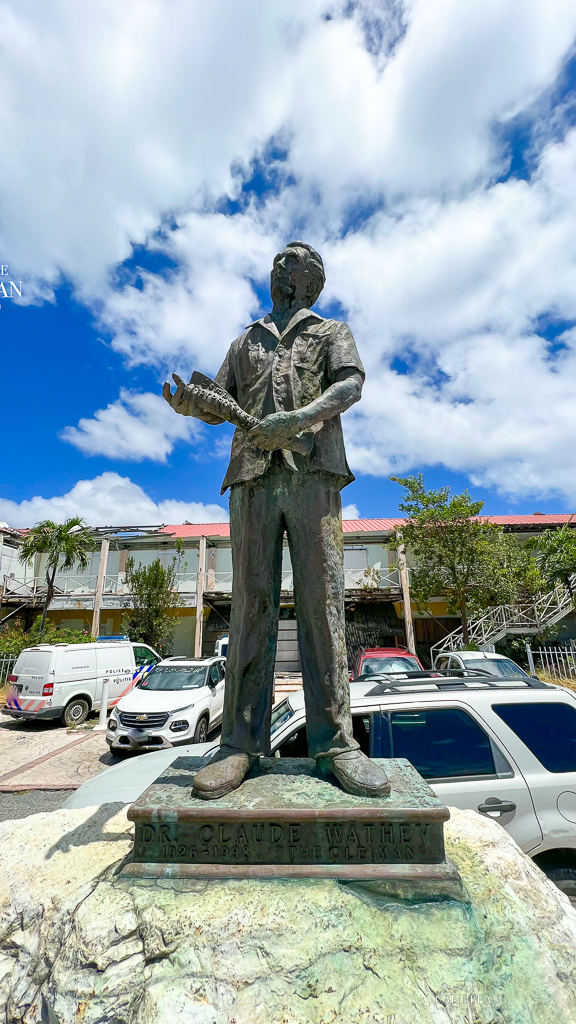
The inscription of the Claude Wathey statue in Port St. Maarten reads:
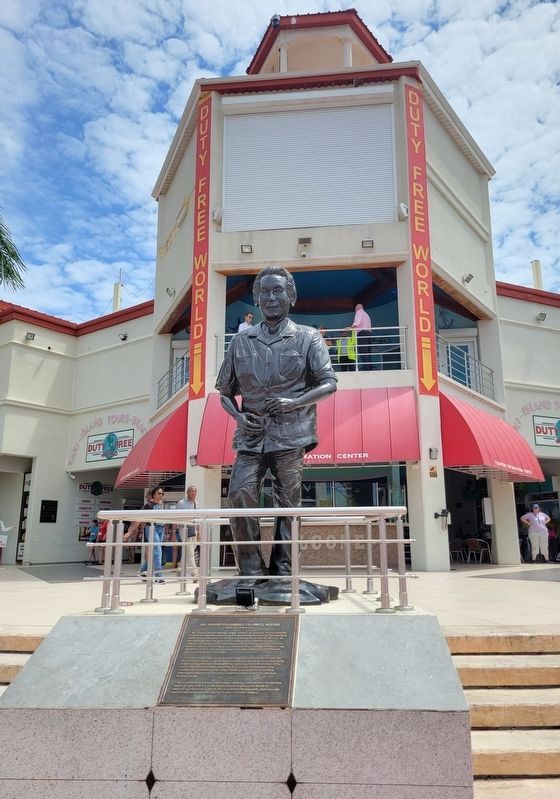
Albert Claudius Wathey, simply “Claude” to everyone, was no doubt the most dominant political figure on the island in the last century. The legendary leader was in power for almost 40 years, during which time St. Maarten was transformed from a sleepy backwater island whose inhabitants had to emigrate elsewhere to find work, into one of the leading tourist destinations in the Caribbean, attracting over a million visitors annually, including a very significant number of cruise passengers as well as thousands of immigrant workers from all over the world.
Claude was not only a man of vision who saw far beyond the horizon, but also a man of action, a captain who steered his people on a course of progress and prosperity. He had conceived of the expansion and modernization of the harbor and airport facilities more than 20 years ago, but his plans were considered too ambitious and costly. Claude’s vision has been fulfilled, although he did not live to see the completion of the project for which he fought so hard.
In recognition of a life of endless love and deep commitment to St. Maarten and its people, and of a vision that is forever inspiring, the Board of Supervisory Directors of the St. Maarten Harbor Holding Ltd., dedicates this statue to the memory of Dr. Albert Claudius “Claude” Wathey.
Conclusion
Sint Maarten honors some outstanding personalities with statues. Above all, they ensure that these statues reflect the greatness of the Sint Maarten people. Moreover, they keep up the memories and honor the contributions of these people who sacrificed personally for St. Maarten and selflessly helped others.
Consequently, these monuments are all part of the history of Sint Maarten.
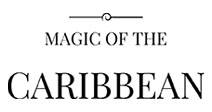
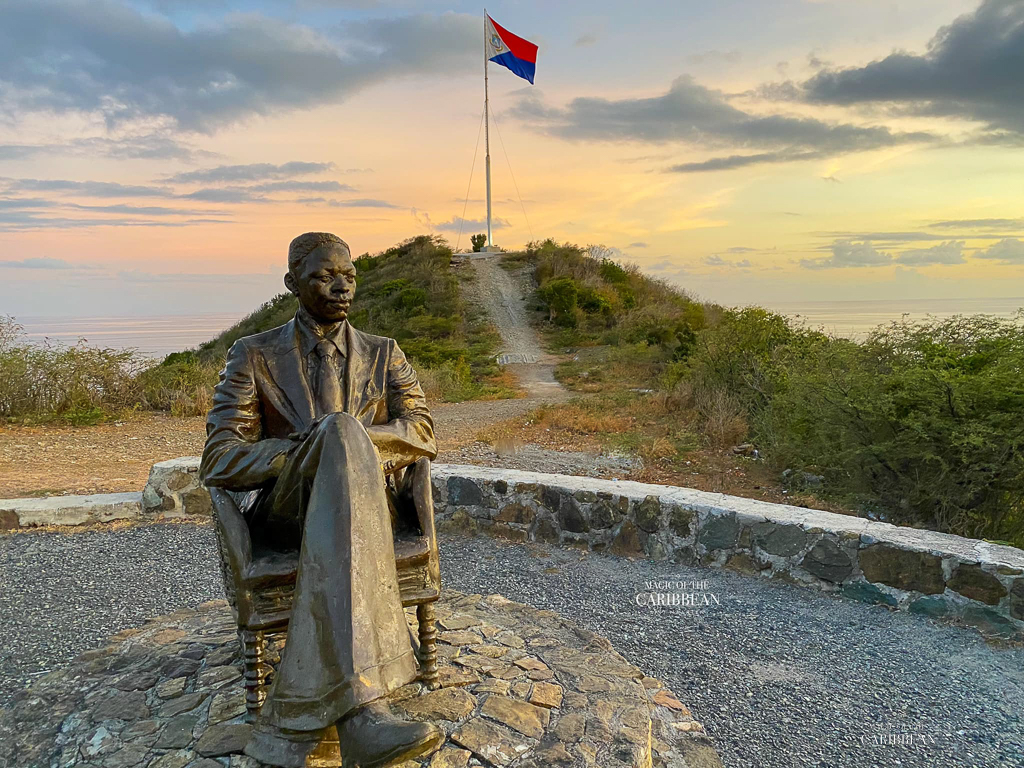


Traducte in french please
We speak only English and German. Sorry.
What about the statue of St Martin at the Catholic Church Philipsberg.
We will have a look into that. Thank you for mentioning it.
Seems to me, we speak English and Dutch, not German. As a St Martener those are the languages that are spoken by us, locals.
My comment was to explain that we do this website only in English – not in French – as requested by Sebastien Bretin. We are no locals, but we live here a decade – therefore we do speak English AND German. Hope this helps!